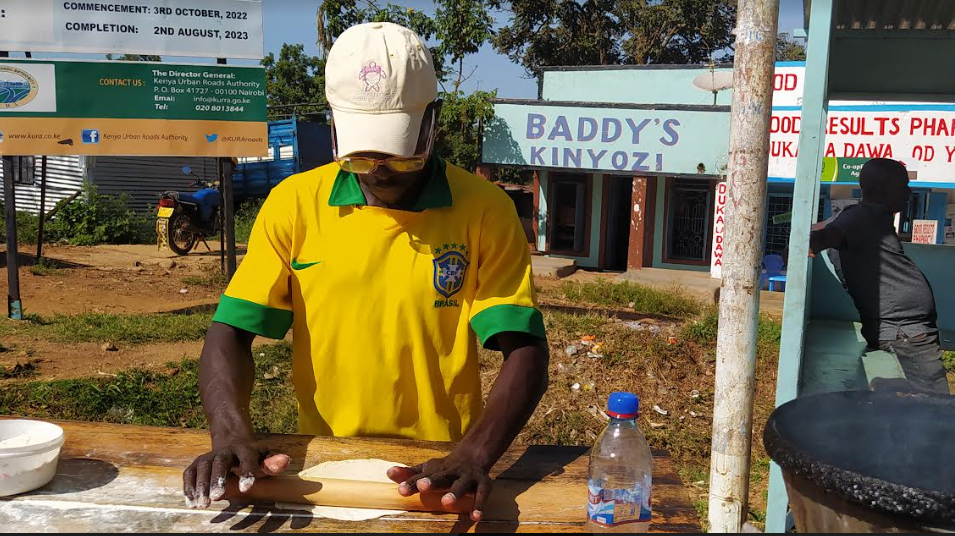According to the Kenya Bureau of Statistics, the annual inflation rate in Kenya rose to 8% in May 2023, up from a ten-month low of 7.9% during the previous month and above market estimates of 7.53%.
The upward pressure came as a result of a sharp increase in the prices of food and non-alcoholic beverages (10.2% vs 10.1% in April), notably sugar (49%), and transportation (10.1%).
Sugar prices have been on the rise amid lower global supply and diminished domestic production as growers switch to producing other crops, including maize.
Mr. James Ligala, a trader in Migori town who is best known in the region for the preparation and hawking of chapatis, says the sharp increase in food prices in the market had forced him to come up with creative measures so as to help him remain in the business since that’s his main source of income.
Ligala narrates that he is finding it difficult to manage the prices of wheat, sugar, and cooking oil, which were much more affordable in the past three years.
“It is sad that in 2020, a 2 kg of wheat flour that sold at Sh. 200 is today going at Sh. 240, while a 1kg of sugar that traded at Sh. 165 is now selling at Sh. 240, the same as a 1 liter of cooking oil whose price has climbed from Sh. 180 to Sh. 300 in the markets,” lamented the trader.
However, in order to beat the high costs of such food items and remain afloat in this trade, Mr. Ligala had to come up with super ways to help him attain his normal profit without increasing the prices of his chapattis.
He delved into reducing the size of his product while at the same time improving its taste (quality) in order to attract more customers.
Even before the coronavirus outbreak, he used to sell his chapatis at twenty shillings a piece, and he has maintained that in the current food item price hardships, he has only reduced the sizes and increased the taste to retain and increase his customer base.
“As usual, business is a matter of playing with someone’s mind. Because I had many customers and I didn’t want to lose them, I decided not to increase the price but reduce the size of the chapattis with new super tastes.
Once a customer comes, the first thing he asks is the price, not the quality of the chapatti. If it is high, they leave for another place, but if it is low, they come in large numbers,” he explains.
This trick helps him increase the number of chapattis produced from a 2 kg wheat flour packet to 50 from the initial number of 35, but with superb taste to the satisfaction of all his customers at an affordable price.
“Your correct calculations will confirm to you that I am still making a modest profit even with the current situation in the market,” he said.
He concludes with a request to the government to think about resolving the high inflation rate in the country.
Not left out in this food item price melodrama is Elisha Oketch, a boda boda rider in Migori town. He says the inflation in the country has forced them to come up with several business ideas in order to help them survive in the boda boda business.
Due to the skyrocketing fuel prices in the market, Mr. Oketch says that riders have decided to carry more passengers at any time of their trips in order to make more money, which is dangerous.
“We have resolved not to make a trip with one passenger anymore but to ensure that the motorcycles ferry two or three customers on a single trip, depending on the state of the road,” he explains.
With the traffic rules of ferrying one passenger per trip and the risk they are exposing themselves to when overloading their machines, Oketch said their main focus now is to make a good profit from a liter of petrol in the tank.
“Nowadays, we are carrying two or up to three passengers at a time if all are heading in the same direction. We charge them the same price. By doing this, we are killing two birds with one stone,” said Mr. Oketch during an interview with him.
Oketch added that they have also come up with a certain mechanism for limiting fuel consumption. This they achieve by tying a ring over the pipe that takes the fuel into the carburetor.
“We do reduce the amount of fuel consumed by tying a ring over the tube taking the fuel into the carburetor. By doing this, we are limiting the consumption of fuel in our motorcycles,” he explained, although the practicability of this is in doubt.
By Obuoyo Michael and George Agimba





